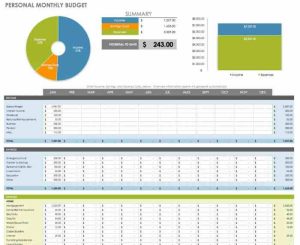Embarking on a new year presents the perfect opportunity for reflection and proactive planning, particularly concerning our financial well-being. This guide provides a structured approach to setting and achieving your top financial goals, covering everything from understanding your current financial landscape to developing long-term strategies for retirement and risk mitigation. We’ll explore practical methods for budgeting, debt management, saving, investing, and securing your financial future.
Through actionable steps and insightful strategies, you’ll learn how to create a personalized financial plan tailored to your specific needs and aspirations. Whether you aim to eliminate debt, boost savings, or plan for a comfortable retirement, this comprehensive guide will empower you to take control of your finances and build a secure financial future.
Understanding Your Current Financial Situation
Before setting ambitious financial goals, it’s crucial to gain a clear understanding of your current financial standing. This involves assessing your income streams, identifying your expenses, and analyzing the difference between the two. A comprehensive understanding of your current financial health will inform the creation of realistic and achievable financial goals. This process allows for informed decision-making and prevents the setting of unrealistic expectations.A realistic budget is the cornerstone of effective financial planning.
It provides a framework for managing your finances and achieving your financial objectives. Without a clear picture of your income and expenses, budgeting effectively is impossible.
Current Income and Expenses
Analyzing your income and expenses provides a foundation for understanding your financial health. The following table illustrates a sample breakdown:
| Income Source | Amount | Expense Category | Amount |
|---|---|---|---|
| Salary | $5,000 | Rent | $1,500 |
| Freelance Work | $500 | Groceries | $500 |
| Investment Income | $100 | Transportation | $300 |
| Utilities | $200 | ||
| Entertainment | $200 | ||
| Savings | $1000 |
This is a simplified example; your personal income and expense categories will likely differ. The key is to accurately record all sources of income and all expenditures.
Tracking Spending for Three Months
To gain a more accurate picture of your spending habits, consistent tracking is necessary. Over the next three months, consider employing a budgeting app or a simple spreadsheet to record every transaction. Categorize each expense (e.g., groceries, transportation, entertainment). Many budgeting apps automatically categorize transactions, simplifying the process. Manually tracking expenses in a spreadsheet provides a similar level of detail.
This detailed record will reveal spending patterns and areas where you can potentially reduce expenses.
Creating a Realistic Budget
A realistic budget balances your income and expenses, ensuring you are not spending more than you earn. It involves projecting your income for the next month and allocating funds to various expense categories based on your spending habits (as revealed through the three-month tracking period). The goal is to create a plan that allows you to meet your financial obligations while also saving for your goals.
A realistic budget is flexible and adaptable; it’s a living document that should be reviewed and adjusted periodically. Consider using the 50/30/20 rule as a guideline: 50% of your after-tax income for needs, 30% for wants, and 20% for savings and debt repayment. This provides a framework for balanced spending and saving.
Successfully navigating your financial journey requires a blend of careful planning, disciplined execution, and consistent monitoring. By implementing the strategies Artikeld in this guide – from crafting a realistic budget and managing debt effectively to strategically saving and investing for the future – you can confidently work towards achieving your financial goals. Remember, consistent effort and proactive planning are key to building a strong financial foundation for a secure and prosperous future.
FAQ Compilation
What’s the difference between the debt snowball and debt avalanche methods?
The debt snowball method prioritizes paying off the smallest debts first for motivational purposes, while the debt avalanche method focuses on paying off the highest-interest debts first to minimize overall interest paid.
How much should I contribute to my retirement savings?
The ideal contribution amount depends on your age, income, and retirement goals. A general guideline is to aim for at least 15% of your pre-tax income, but consulting a financial advisor is recommended for personalized advice.
What are some low-risk investment options for beginners?
High-yield savings accounts, money market accounts, and government bonds are generally considered low-risk investment options suitable for beginners. Diversification across asset classes is also important as you gain experience.
What is a financial audit, and why is it important?
A financial audit is an independent examination of a company’s financial records to ensure accuracy and compliance with accounting standards. It provides assurance to stakeholders and helps identify areas for improvement in financial management.





